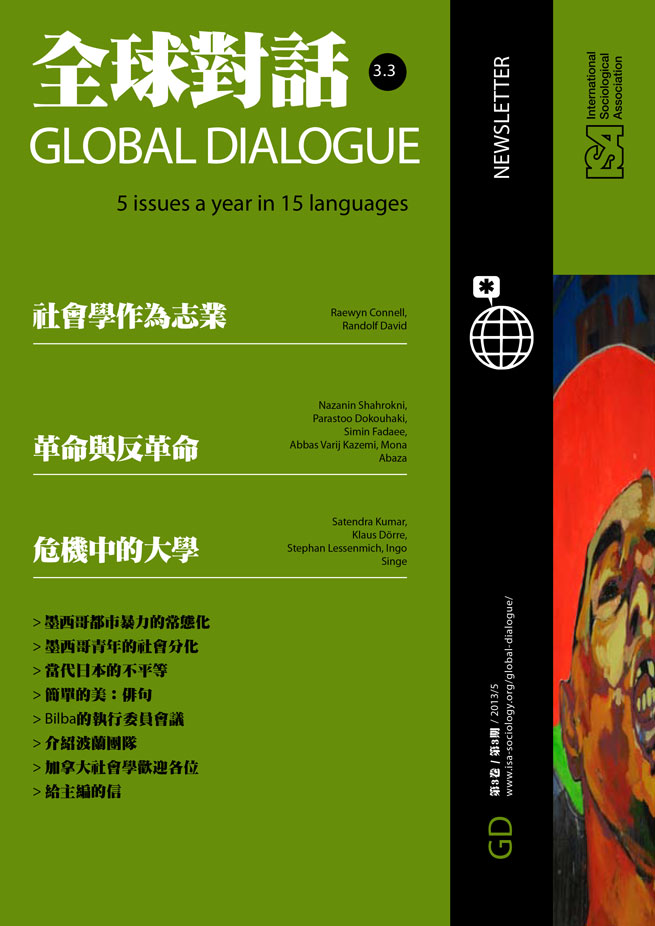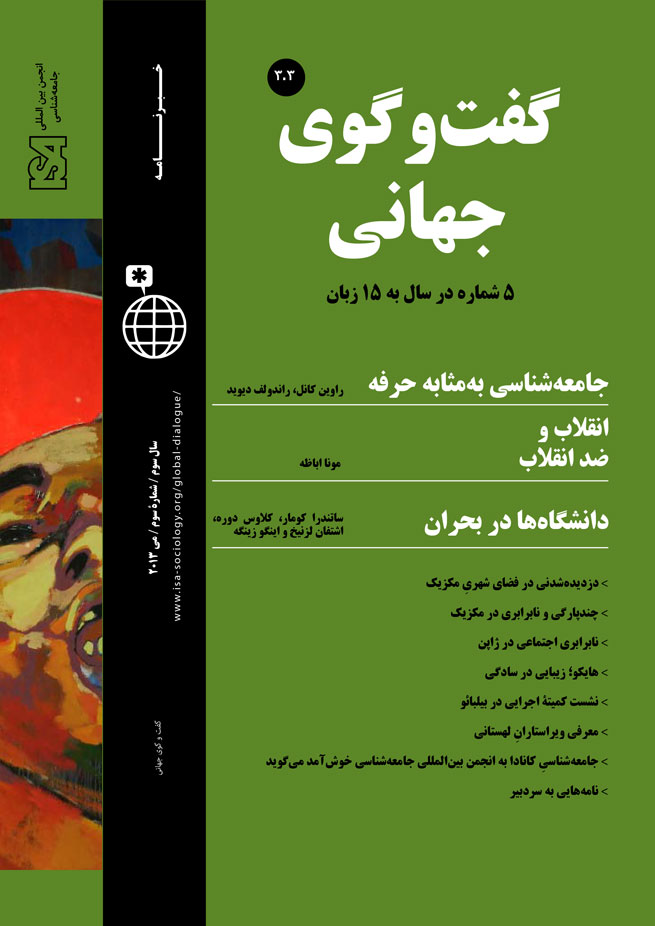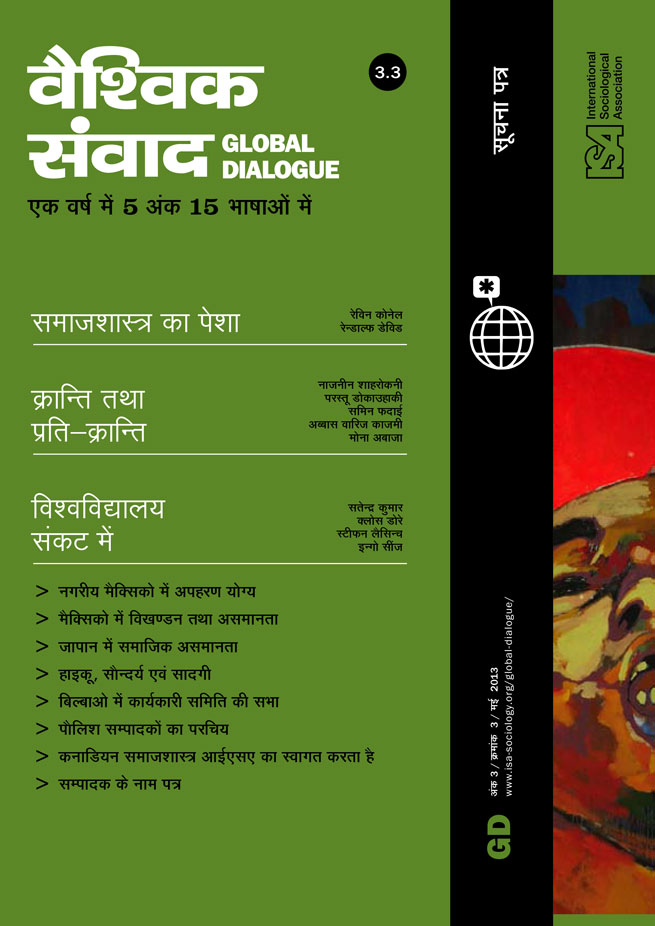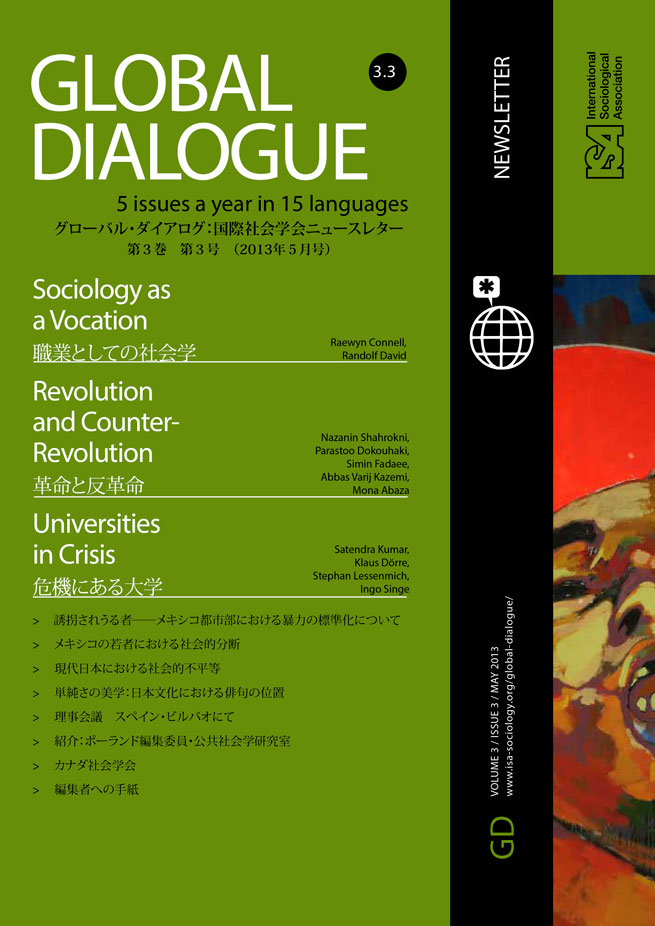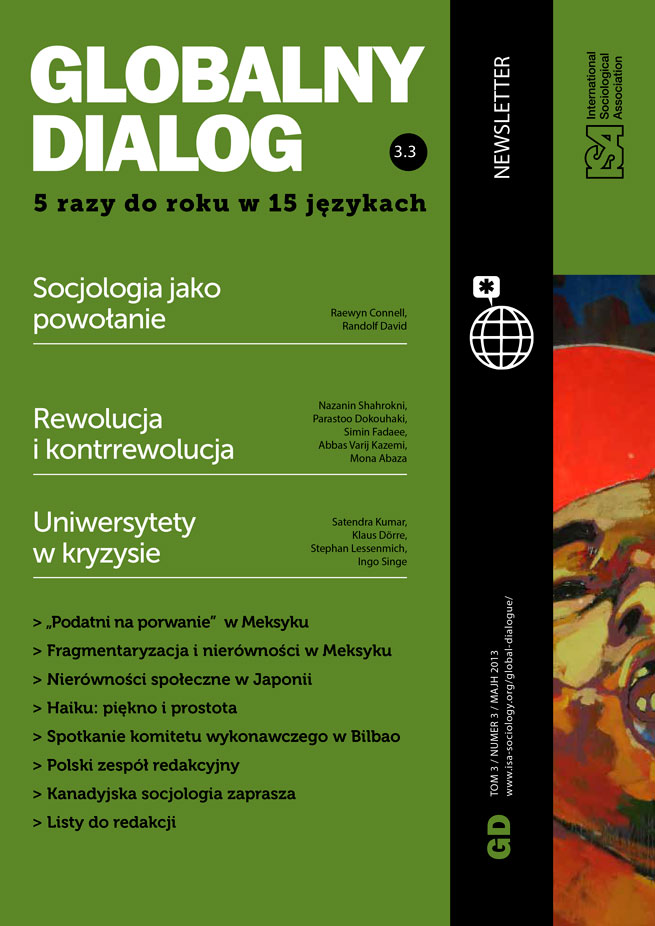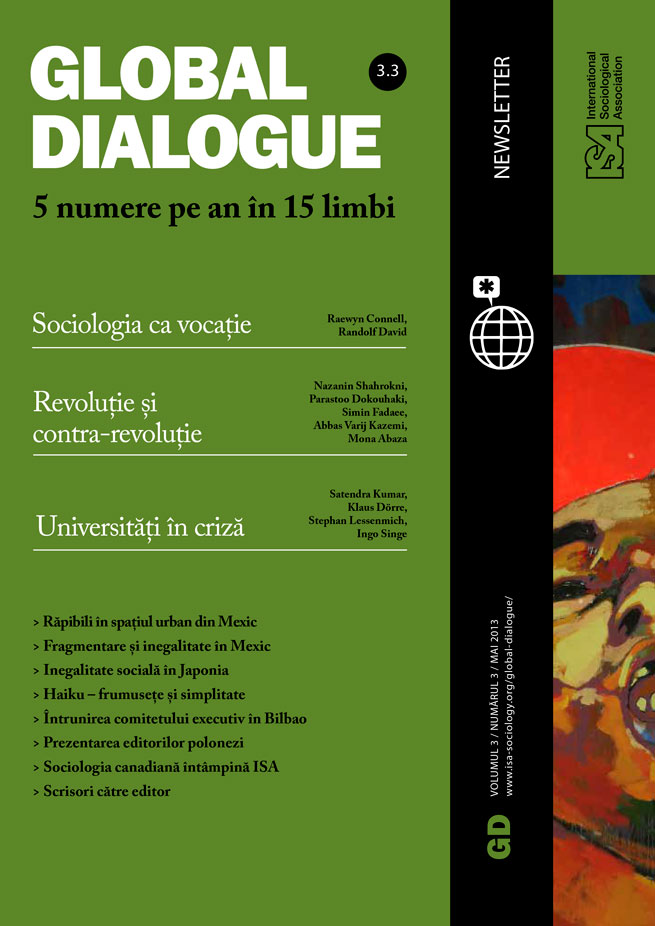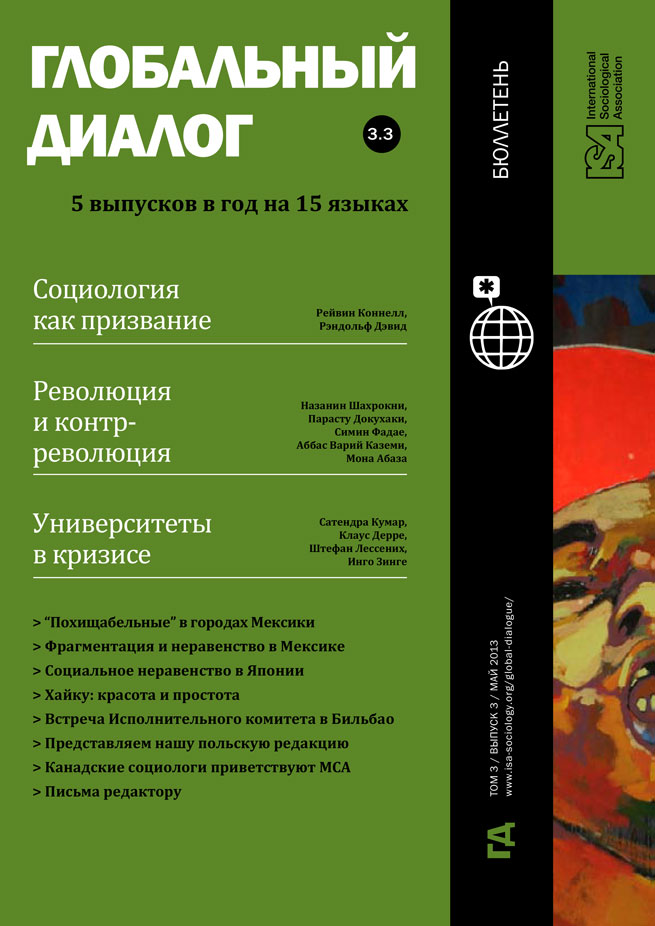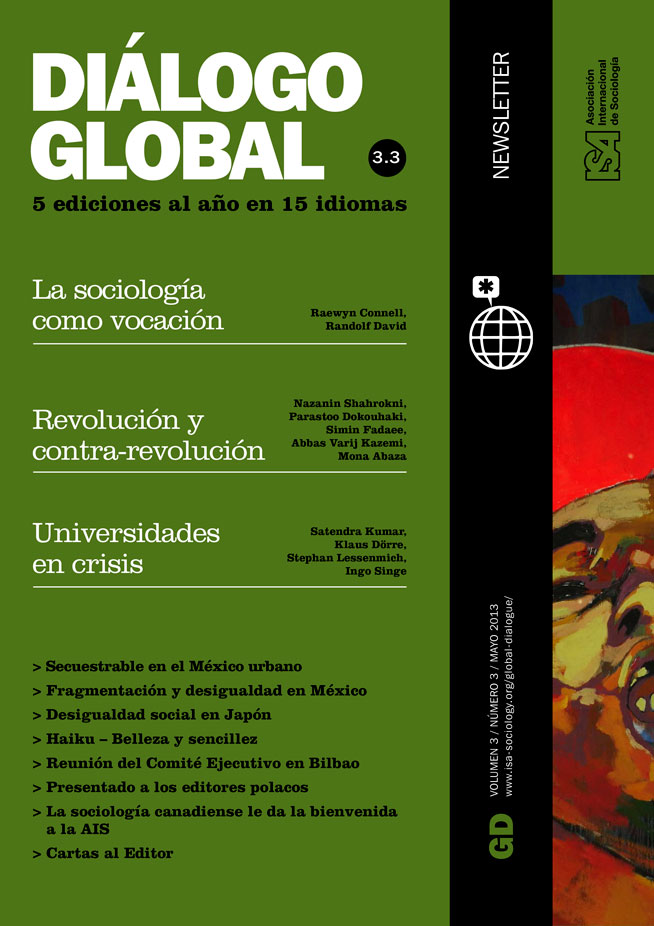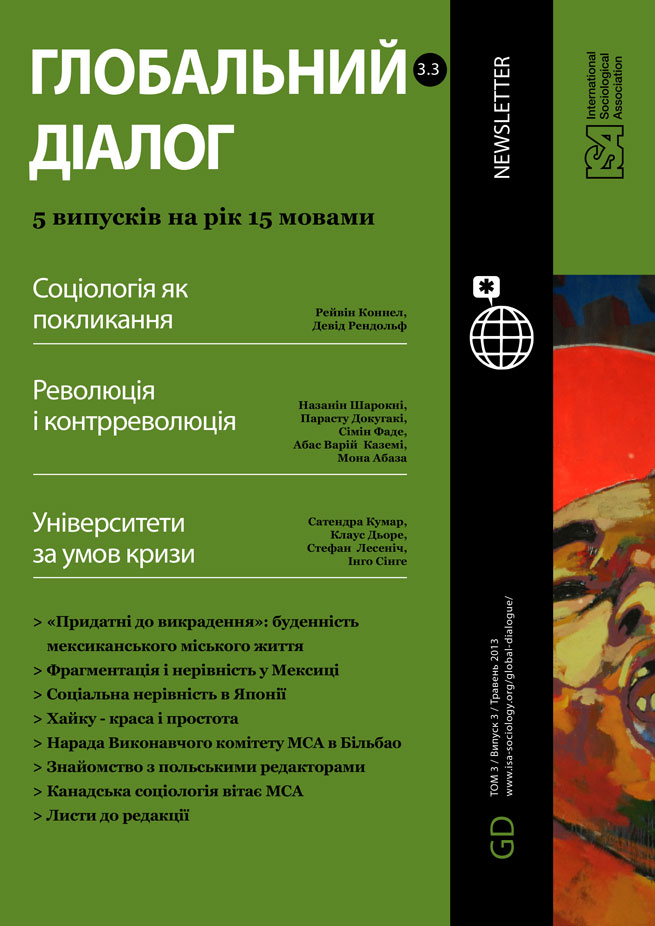Inequality seems to be endemic in Mexico. After a decade of moderate economic growth and improvements in some social indicators, the country continues to show very high levels of social inequality. Overall levels of education have risen, coverage of some basic health services has expanded, and conditional cash transfer programs, such as Oportunidades, now reach more than 5 million households, which represent nearly a fifth of the total population. Still, the contribution of these programs to poverty reduction has been modest and very inconsistent.
Nevertheless, behind these and other indicators of progress in meeting international human welfare goals, we see a persistent inequality. In the context of contradictory trends, a new model of “unequal inclusion,” is emerging. Privilege and deprivation exist side by side, ignoring each other and even tacitly accepting each other. Inequality has taken a qualitative leap towards fragmenting the social structure through spaces of inclusion that are not only unequal, but also socially and culturally distant.
This process of fragmentation is evident when we examine the transition to adulthood. Childhood and youth represent key periods in the life course. On the one hand, the opportunities and constraints at this stage define the possibilities and conditions for one’s future wellbeing. On the other hand, these are critical moments of socialization and subjectification that will determine how one integrates into social and cultural spaces in adult life. Literature on the topic has provided important insights into structural inequalities and the mechanisms by which they operate, but we know much less about how inequality leads to a process of social fragmentation. The transition to adulthood and the experience of youth are ideal processes for exploring theories of social fragmentation both in their structural and in their socio-cultural dimensions.
Access to education in Mexico has increased substantially in the past few decades. Between 1990 and 2010, basic education coverage (through age of nine) became almost universal, and among those aged between 25 and 29 the average number of years of schooling increased from 7.9 to 10.2. In addition, there were several constitutional reforms that extended compulsory education, most recently in 2011, up to the age of twelve. But, at the same time, the educational system has experienced a deep fragmentation. Thus, privileged children and youth attend the same private schools, have more and better resources for learning at school and at home, and receive an education of higher quality and greater variety. Among poorer groups, children and youth also attend socially homogenous schools, but with a more precarious infrastructure and fewer pedagogical resources to support students that come from homes with little social or cultural capital. As a result, educational achievement scores show substantial differences; in the 2006 PISA exam in science, for instance, only 25% of students from the highest quartile on the Socio-Economic and Cultural Index failed, but this percentage grew to 56% in the second quartile and 71% in the first or lowest quartile.
The consequences of fragmentation are not limited to educational achievement; they extend to school experiences and the meaning of education. For privileged children and youth, school represents a total and closed experience. A large part of their lives occur and are organized by school, which becomes the most important space of socialization, definition of identities, and construction of cultural capital. The homogeneity and social networks built in schools extend to other spaces and persist from early childhood through adulthood. School is for them the only possible path of transition to adulthood, and their educational trajectories are continuous and linear. Meanwhile, for children and young people from poorer strata, school is a limited experience that must be combined with other activities and obligations. At the same time, it is more open to the influences of other concerns, interests, and external conditions. Therefore, these children’s school careers tend to be intermittent and fractured so that, as they progress, school loses importance in the face of other pathways and spaces of transition and social integration.
Fragmentation in education finds its correlate in urban fragmentation. In Mexico, as in other countries in the region, large cities are undergoing a process of increasing residential segregation. In the case of Mexico City, for example, just as the poor periphery has grown larger and more distant, the privileged classes have concentrated in specific areas and in gated and exclusive communities. Enclosure and isolation is not exclusive to the elite; stimulated by urban insecurity and fear of the city, they have also spread into the middle class and even to lower class people with aspirations to upper mobility.
Socio-spatial fragmentation goes beyond residential segregation and extends to the experience of the city and the urban sociability of children and youth. Housing, schools, shopping, and entertainment centers function as socio-spatial nodes that determine one’s urban experience: they are primary spatial referents and a focus of social relations. This process creates a particular and unequal spatial structure: poor and privileged young people each have their own urban geographies as well as their own spatial habitus.
Their definitions of normal urban life, of what it means to live in the city, are constructed in contexts where the characteristics of transport, housing, streets, green spaces, shopping centers, and even the ways of acting, dressing, and speaking are completely different. This refers not only to different and unequal cities, but also to spaces of belonging within cities that are mutually exclusive and unknown to each other.
Even when the scale of segregation decreases, urban social life is characterized by the avoidance of “the other” and by social homogeneity in encounters and interactions. Privileged young people retreat from open public spaces: they live in closed condominiums; they study in private universities; they consume in exclusive shopping centers and restaurants; they move about in private cars. Of the twenty young people I interviewed in two private universities, only three did not have their own cars, while of the 19 interviewees in two public universities, not one had a car. Of the latter, 90% had used public transport more than three days of the last week. In contrast, among the privileged young people, only 15% (the three without cars) had this same experience.
The retreat from public space is not exclusive to the elites. New semi-public spaces, closed and with various levels of private security, have emerged for other social classes as well. But open public space is dominated by the popular classes. The possibility of encounters and shared social experiences across class is almost zero. Moreover, outside of the city young people find mostly empty spaces or prohibited zones. Interaction with strangers, when it is unavoidable, is dominated by mutual stigmatization, or inserted into controlled hierarchical relationships.
Such social fragmentation has two implications. The first is the possibility that behind social indicators that point to advance and progress, a model of “unequal inclusion” is being consolidated – with social approval. The second is that the formation of distant and mutually exclusive social and cultural spaces may weaken collective responsibility as well as the recognition and awareness of the other. Social fragmentation can hide inequality and, at the same time, undermine social cohesion.
Gonzalo A. Saraví, Center for Research and Higher Studies in Social Anthropology (CIESAS), Mexico
by Gonzalo A. Saraví, Center for Research and Higher Studies in Social Anthropology (CIESAS), Mexico
Inequality seems to be endemic in Mexico. After a decade of moderate economic growth and improvements in some social indicators, the country continues to show very high levels of social inequality. Overall levels of education have risen, coverage of some basic health services has expanded, and conditional cash transfer programs, such as Oportunidades, now reach more than 5 million households, which represent nearly a fifth of the total population. Still, the contribution of these programs to poverty reduction has been modest and very inconsistent.
Nevertheless, behind these and other indicators of progress in meeting international human welfare goals, we see a persistent inequality. In the context of contradictory trends, a new model of “unequal inclusion,” is emerging. Privilege and deprivation exist side by side, ignoring each other and even tacitly accepting each other. Inequality has taken a qualitative leap towards fragmenting the social structure through spaces of inclusion that are not only unequal, but also socially and culturally distant.
This process of fragmentation is evident when we examine the transition to adulthood. Childhood and youth represent key periods in the life course. On the one hand, the opportunities and constraints at this stage define the possibilities and conditions for one’s future wellbeing. On the other hand, these are critical moments of socialization and subjectification that will determine how one integrates into social and cultural spaces in adult life. Literature on the topic has provided important insights into structural inequalities and the mechanisms by which they operate, but we know much less about how inequality leads to a process of social fragmentation. The transition to adulthood and the experience of youth are ideal processes for exploring theories of social fragmentation both in their structural and in their socio-cultural dimensions.
Access to education in Mexico has increased substantially in the past few decades. Between 1990 and 2010, basic education coverage (through age of nine) became almost universal, and among those aged between 25 and 29 the average number of years of schooling increased from 7.9 to 10.2. In addition, there were several constitutional reforms that extended compulsory education, most recently in 2011, up to the age of twelve. But, at the same time, the educational system has experienced a deep fragmentation. Thus, privileged children and youth attend the same private schools, have more and better resources for learning at school and at home, and receive an education of higher quality and greater variety. Among poorer groups, children and youth also attend socially homogenous schools, but with a more precarious infrastructure and fewer pedagogical resources to support students that come from homes with little social or cultural capital. As a result, educational achievement scores show substantial differences; in the 2006 PISA exam in science, for instance, only 25% of students from the highest quartile on the Socio-Economic and Cultural Index failed, but this percentage grew to 56% in the second quartile and 71% in the first or lowest quartile.
The consequences of fragmentation are not limited to educational achievement; they extend to school experiences and the meaning of education. For privileged children and youth, school represents a total and closed experience. A large part of their lives occur and are organized by school, which becomes the most important space of socialization, definition of identities, and construction of cultural capital. The homogeneity and social networks built in schools extend to other spaces and persist from early childhood through adulthood. School is for them the only possible path of transition to adulthood, and their educational trajectories are continuous and linear. Meanwhile, for children and young people from poorer strata, school is a limited experience that must be combined with other activities and obligations. At the same time, it is more open to the influences of other concerns, interests, and external conditions. Therefore, these children’s school careers tend to be intermittent and fractured so that, as they progress, school loses importance in the face of other pathways and spaces of transition and social integration.
Fragmentation in education finds its correlate in urban fragmentation. In Mexico, as in other countries in the region, large cities are undergoing a process of increasing residential segregation. In the case of Mexico City, for example, just as the poor periphery has grown larger and more distant, the privileged classes have concentrated in specific areas and in gated and exclusive communities. Enclosure and isolation is not exclusive to the elite; stimulated by urban insecurity and fear of the city, they have also spread into the middle class and even to lower class people with aspirations to upper mobility.
Socio-spatial fragmentation goes beyond residential segregation and extends to the experience of the city and the urban sociability of children and youth. Housing, schools, shopping, and entertainment centers function as socio-spatial nodes that determine one’s urban experience: they are primary spatial referents and a focus of social relations. This process creates a particular and unequal spatial structure: poor and privileged young people each have their own urban geographies as well as their own spatial habitus.
Their definitions of normal urban life, of what it means to live in the city, are constructed in contexts where the characteristics of transport, housing, streets, green spaces, shopping centers, and even the ways of acting, dressing, and speaking are completely different. This refers not only to different and unequal cities, but also to spaces of belonging within cities that are mutually exclusive and unknown to each other.
Even when the scale of segregation decreases, urban social life is characterized by the avoidance of “the other” and by social homogeneity in encounters and interactions. Privileged young people retreat from open public spaces: they live in closed condominiums; they study in private universities; they consume in exclusive shopping centers and restaurants; they move about in private cars. Of the twenty young people I interviewed in two private universities, only three did not have their own cars, while of the 19 interviewees in two public universities, not one had a car. Of the latter, 90% had used public transport more than three days of the last week. In contrast, among the privileged young people, only 15% (the three without cars) had this same experience.
The retreat from public space is not exclusive to the elites. New semi-public spaces, closed and with various levels of private security, have emerged for other social classes as well. But open public space is dominated by the popular classes. The possibility of encounters and shared social experiences across class is almost zero. Moreover, outside of the city young people find mostly empty spaces or prohibited zones. Interaction with strangers, when it is unavoidable, is dominated by mutual stigmatization, or inserted into controlled hierarchical relationships.
Such social fragmentation has two implications. The first is the possibility that behind social indicators that point to advance and progress, a model of “unequal inclusion” is being consolidated – with social approval. The second is that the formation of distant and mutually exclusive social and cultural spaces may weaken collective responsibility as well as the recognition and awareness of the other. Social fragmentation can hide inequality and, at the same time, undermine social cohesion.
by Gonzalo A. Saraví, Center for Research and Higher Studies in Social Anthropology (CIESAS), Mexico
Inequality seems to be endemic in Mexico. After a decade of moderate economic growth and improvements in some social indicators, the country continues to show very high levels of social inequality. Overall levels of education have risen, coverage of some basic health services has expanded, and conditional cash transfer programs, such as Oportunidades, now reach more than 5 million households, which represent nearly a fifth of the total population. Still, the contribution of these programs to poverty reduction has been modest and very inconsistent.
Nevertheless, behind these and other indicators of progress in meeting international human welfare goals, we see a persistent inequality. In the context of contradictory trends, a new model of “unequal inclusion,” is emerging. Privilege and deprivation exist side by side, ignoring each other and even tacitly accepting each other. Inequality has taken a qualitative leap towards fragmenting the social structure through spaces of inclusion that are not only unequal, but also socially and culturally distant.
This process of fragmentation is evident when we examine the transition to adulthood. Childhood and youth represent key periods in the life course. On the one hand, the opportunities and constraints at this stage define the possibilities and conditions for one’s future wellbeing. On the other hand, these are critical moments of socialization and subjectification that will determine how one integrates into social and cultural spaces in adult life. Literature on the topic has provided important insights into structural inequalities and the mechanisms by which they operate, but we know much less about how inequality leads to a process of social fragmentation. The transition to adulthood and the experience of youth are ideal processes for exploring theories of social fragmentation both in their structural and in their socio-cultural dimensions.
Access to education in Mexico has increased substantially in the past few decades. Between 1990 and 2010, basic education coverage (through age of nine) became almost universal, and among those aged between 25 and 29 the average number of years of schooling increased from 7.9 to 10.2. In addition, there were several constitutional reforms that extended compulsory education, most recently in 2011, up to the age of twelve. But, at the same time, the educational system has experienced a deep fragmentation. Thus, privileged children and youth attend the same private schools, have more and better resources for learning at school and at home, and receive an education of higher quality and greater variety. Among poorer groups, children and youth also attend socially homogenous schools, but with a more precarious infrastructure and fewer pedagogical resources to support students that come from homes with little social or cultural capital. As a result, educational achievement scores show substantial differences; in the 2006 PISA exam in science, for instance, only 25% of students from the highest quartile on the Socio-Economic and Cultural Index failed, but this percentage grew to 56% in the second quartile and 71% in the first or lowest quartile.
The consequences of fragmentation are not limited to educational achievement; they extend to school experiences and the meaning of education. For privileged children and youth, school represents a total and closed experience. A large part of their lives occur and are organized by school, which becomes the most important space of socialization, definition of identities, and construction of cultural capital. The homogeneity and social networks built in schools extend to other spaces and persist from early childhood through adulthood. School is for them the only possible path of transition to adulthood, and their educational trajectories are continuous and linear. Meanwhile, for children and young people from poorer strata, school is a limited experience that must be combined with other activities and obligations. At the same time, it is more open to the influences of other concerns, interests, and external conditions. Therefore, these children’s school careers tend to be intermittent and fractured so that, as they progress, school loses importance in the face of other pathways and spaces of transition and social integration.




